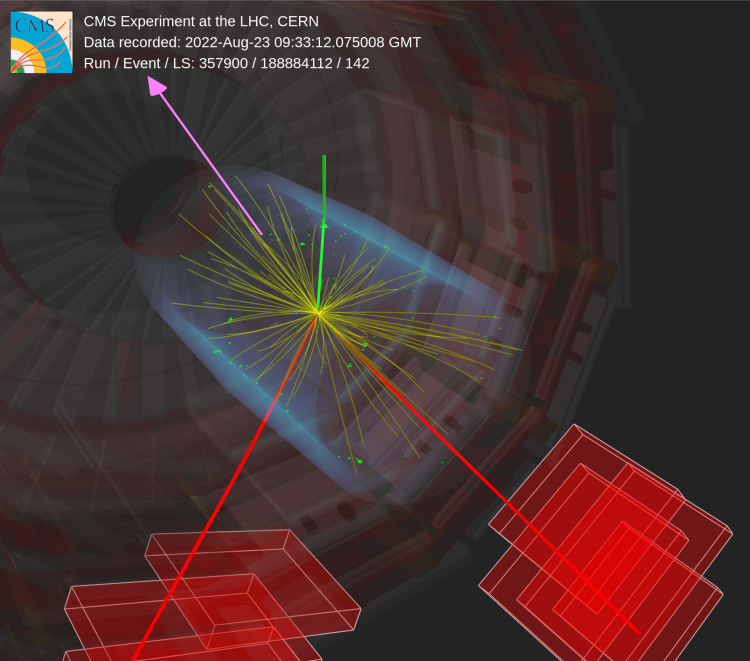
Our current understanding of the nature of elementary particles and their interactions is encapsulated in what is known as the Standard Model (SM) of particle physics. Particles and interactions introduced in the SM have been measured with remarkable precision over the past few decades. Yet, the model is unable to address some of our observations such as the existence of dark matter or the mass of neutrinos. Now, at the new energy frontier, the objective is to re-measure the SM, ensuring its validity and daring to venture beyond the SM to explain the unknown aspects of the universe.
The CMS experiment at the LHC has just released a new result measuring the simultaneous production of a W and a Z boson (the WZ process) at 13.6 TeV center-of-mass energy. The exchange of these two particles between fermions (quarks and leptons) is the microscopic manifestation of the electroweak (EW) force. This is why these particles are known as the EW force carriers. Their simultaneous production provides crucial information about the electroweak sector of the SM, which has been a focus of studies at the LHC over the past years. As shown in Fig. 1, at the LHC, quarks from colliding protons interact and produce a W and a Z boson, simultaneously. A precise measurement of the WZ production cross section therefore gives insight about the quark content of the proton, which is particularly important at the new collision energy.
 |
 |
 |
Figure 1: Diagrams representing the WZ production in proton-proton collisions.
The presence of three leptons (electrons or muons) where two arise from the Z boson decay and one from the W boson decay, provides a distinct event signature in the detector and helps suppress backgrounds. Further requirements are imposed to purify the selected event sample as much as possible. Selected events are divided into four groups depending on the type of the leptons, as demonstrated in Fig. 2. The contribution of the WZ signal is dominant in all classes, corresponding overall to 85% of the sample. The remaining backgrounds contain other processes where either a W or a Z boson exists. In addition, there are processes with leptons from hadron decays, known as “nonprompt” backgrounds, that are measured employing dedicated techniques in other subsamples of the data.
Figure 2: Distribution of the number of events in categories with different combinations of electrons and muons, i.e., eee, ee𝜇, 𝜇𝜇e and 𝜇𝜇𝜇. The yellow histogram represents the expected number of WZ events, which is to be compared with the other colored histograms, the backgrounds, and the data, depicted as black points in the figure.
The WZ cross section is measured by fitting the event yields as predicted by the SM to the data and accounting for different sources of uncertainties. Our measurement is shown in Fig. 3 together with other WZ cross section measurements performed by CMS over the past decade at different center-of-mass energies. The results are compared with high-accuracy theory predictions. Despite using the data of only one year of data taking, our latest measurement presents a competitive precision compared to earlier measurements. Analyzing the entire data of LHC Run 3 will not only further improve the precision but also provide the opportunity to precisely measure distributions that may give hints for new phenomena.
Figure 3: The CMS measurements of the WZ cross section at different center-of-mass energies. The measurements and their uncertainties, respectively presented as points and bars, are compared to the most accurate theoretical predictions to date.
Written by: Carlos Vico Villalba, for the CMS Collaboration
Edited by: Muhammad Ansar Iqbal
Read more about these results:
-
CMS Physics Analysis Summary (SMP-24-005) " Measurement of the inclusive WZ production cross section in pp collisions at 13.6 TeV with the CMS experiment "
-
Display of collision events: CERN CDS
-
@CMSExperiment on social media: Bluesky - Facebook - Instagram - LinkedIn - TikTok - Twitter/X - YouTube

